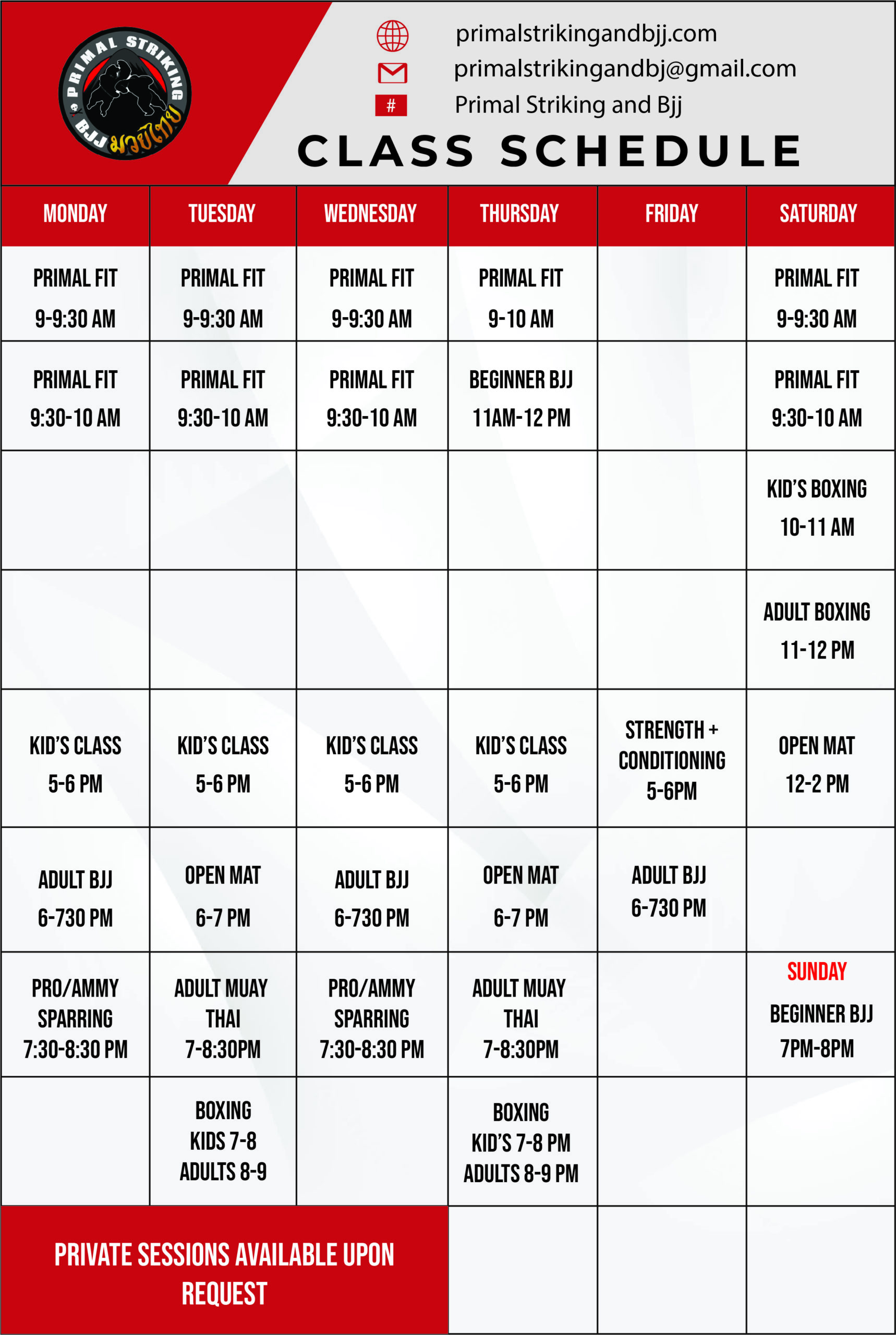Class schedules
Full schedule
Class Descriptions
THE GENTLE ART
brazilian jiu-jitsu
Mondays and Wednesdays 6p to 7:30p
Brazilian Jiu-Jitsu is a self-defence martial art and combat sport based on grappling, ground fighting, and submission holds. It focuses on the skill of controlling one’s opponent, gaining a dominant position and using a number of techniques to force them in to submission via joint locks or chokeholds. Come experience black belt level training!
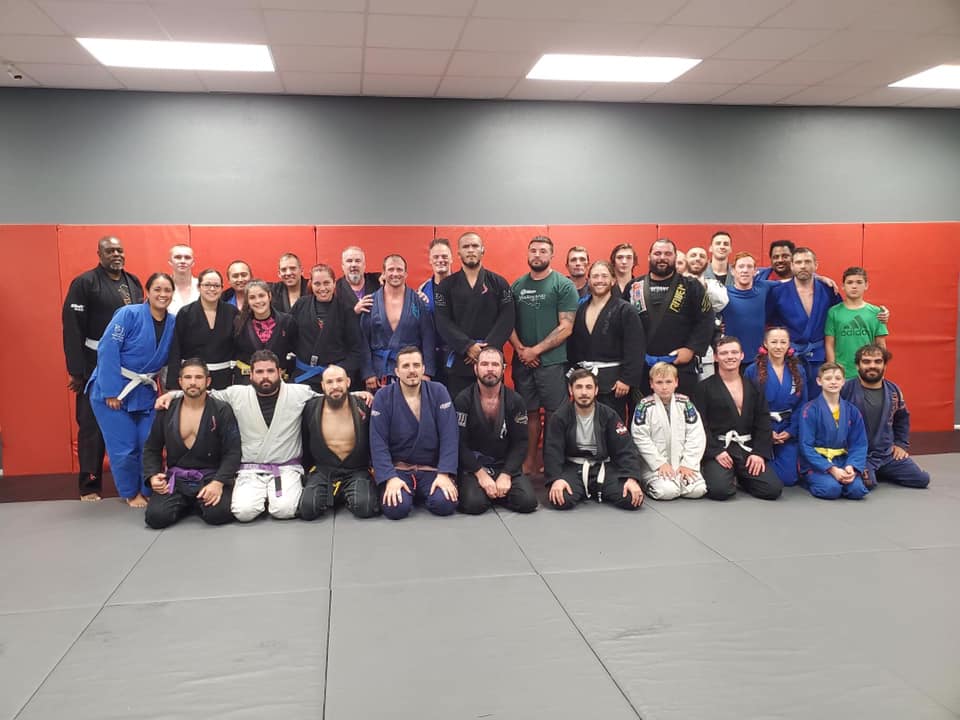
THE ART OF EIGHT LIMBS
muay thai and mma
Classes held Tuesday and Thursday 7p to 8:30p.
Muay Thai, or referred to as ‘Thai boxing’, is a combat sport of Thailand that uses stand-up striking along with various clinching techniques. This discipline is known as the “art of eight limbs” as it is characterized by the combined use of fists, elbows, knees, and shins. Our Muay Thai is Mixed Martial Arts program blends strikes, throws and stand up grappling to make a very complete striking art.
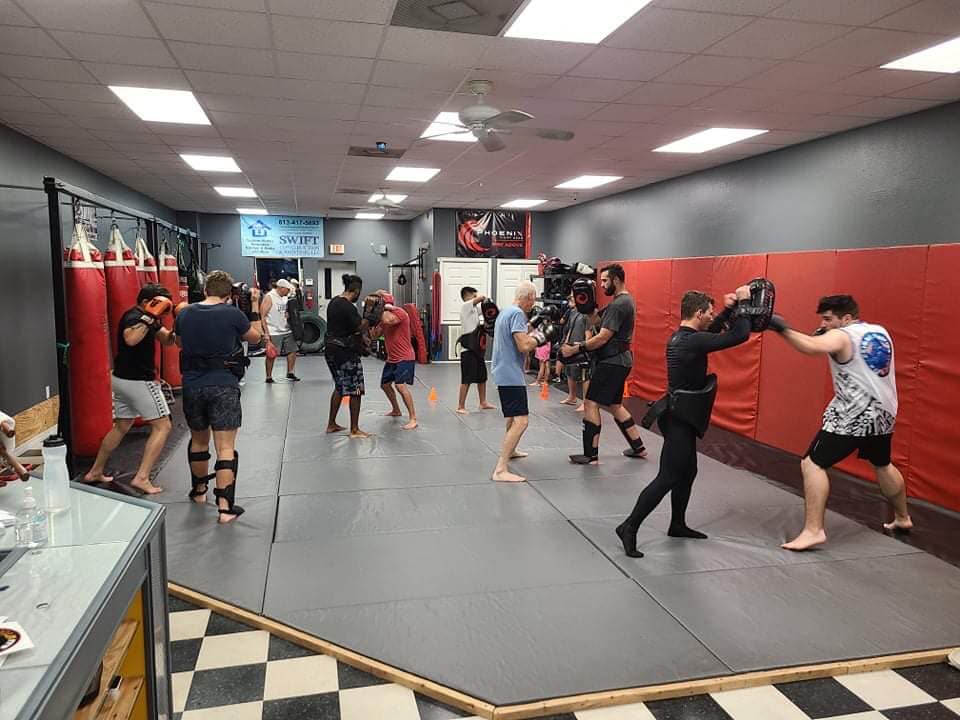
ninja school
Ninja school for kids is taught 5p to 6p Monday thru Thursday.
Our Ninja School program is a unique program that blends BJJ, striking and fun for your children. They enjoy themselves while having a great time and also learning discipline and getting exercise. Class is for ages 5 and up.
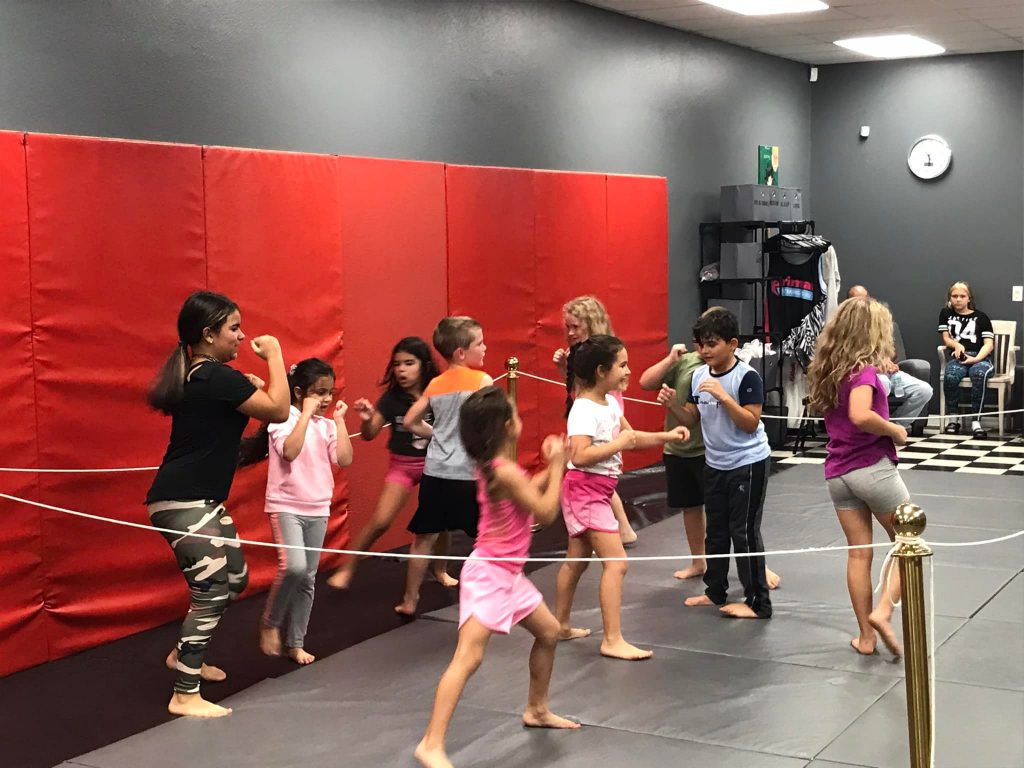
THE SWEET SCIENCE
Boxing
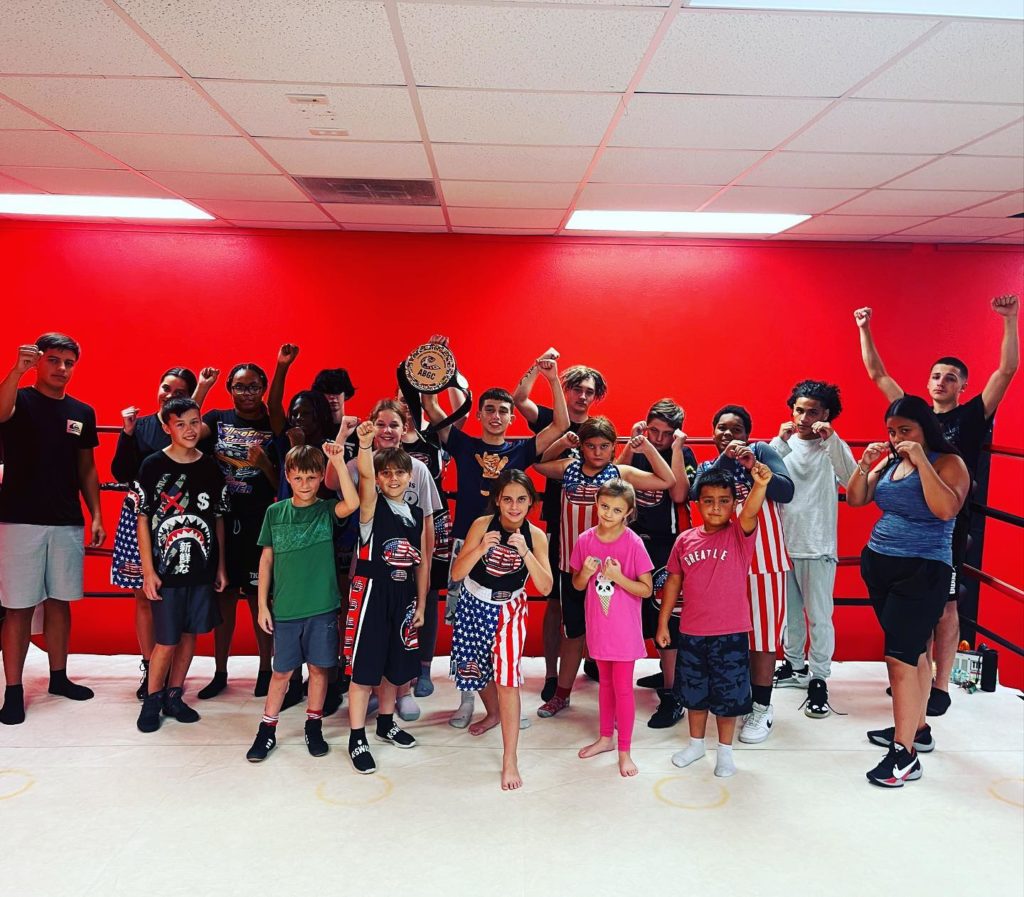
START YOUR WEIGHT LOSS JOURNEY
Fit Smart
The FitSmart™ Challenge is a nationally recognized weight loss program that has helped thousands of people across the country meet their fitness goals! Our Coaches are looking for 45 participants who are willing to embark on a 16 Week Weight Loss Journey!! We have designed this program to work for any BODY and everybody! You DO NOT have to be in good shape to start this program.
This amazing program combines Motivation, Structure and Accountability to help you get results that you never thought would be possible! We will give you all of the tools and workouts you’ll need to successfully meet your goals! It includes working with our awesome Coaches, FREE meal plans, monthly fitness assessments, unlimited classes, non-intimidating environment & so much more!
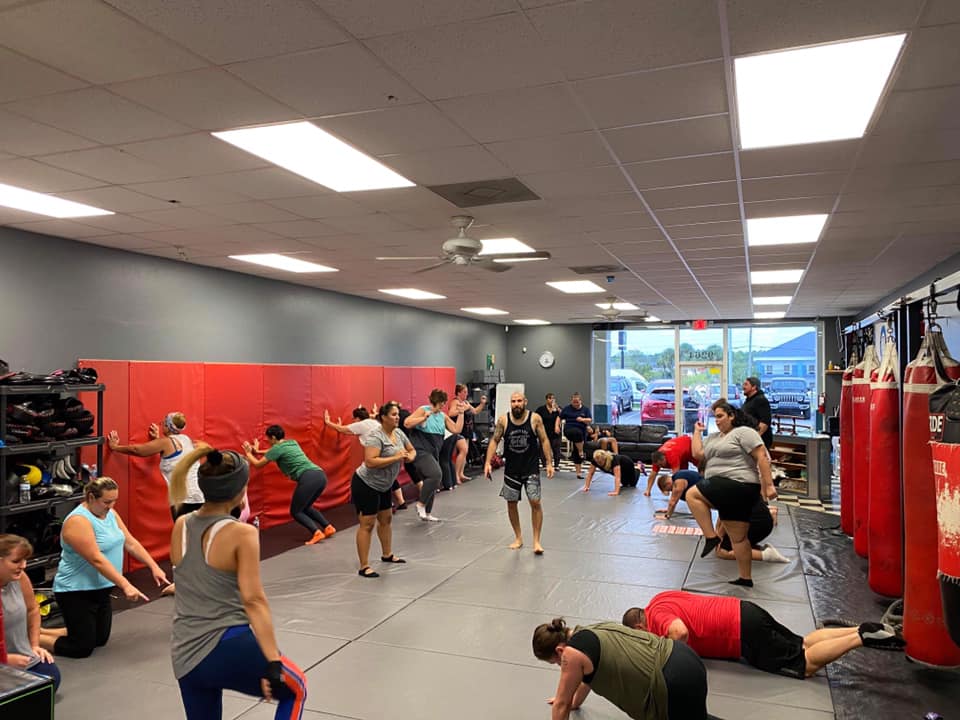
FITNESS
Strength and Conditioning
Let our coaches create a personalized workout program for you to help you build strength, conditioning and fitness in a smart and fun way.
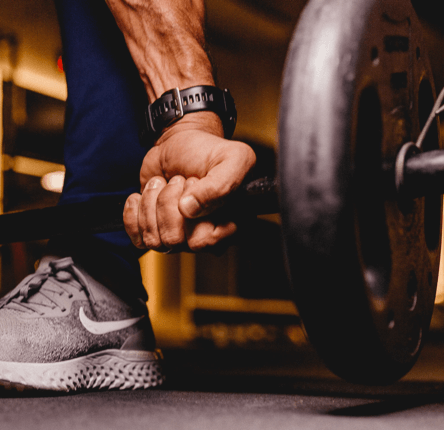
The healing art of Thailand
SOMAVEDA® THAI YOGA THERAPY
Athletes all over the world are turning to sports focused Thai Yoga to help them avoid getting hurt and to promote recovery when an injury is sustained. Sports Thai Yoga is used to speed healing, relieve pain, and increase muscle strength and stamina
Tyler Singleton CPT1 SomaVeda® Practitioner
Tyler 813-337-9338
tyler@tttt.yoga

